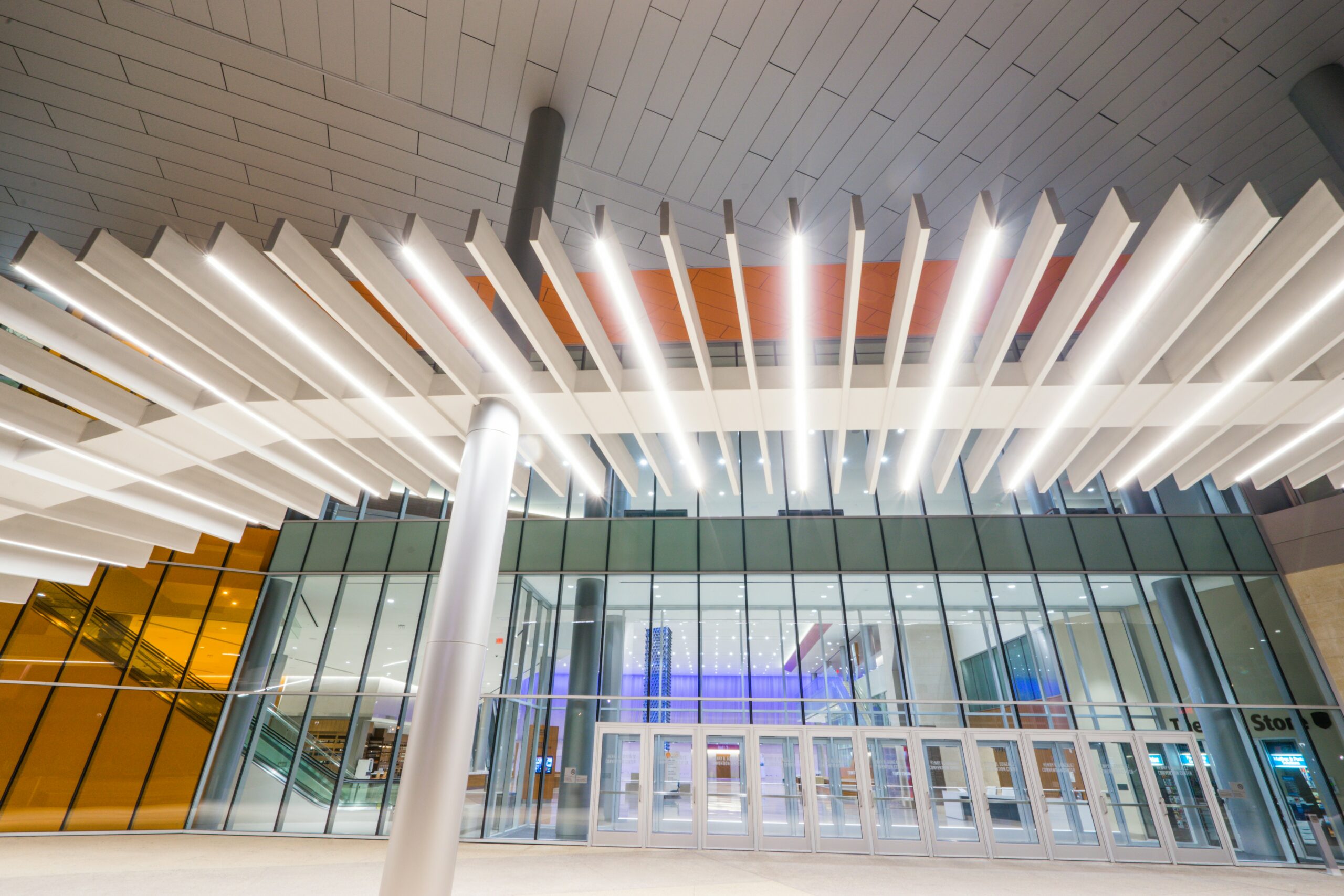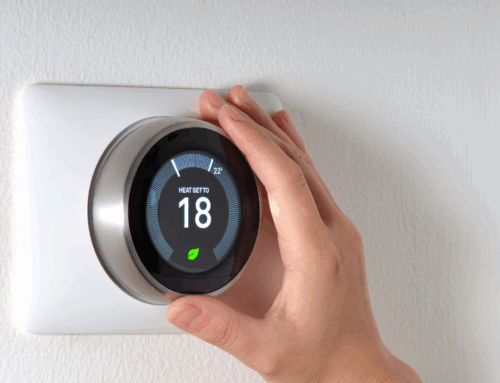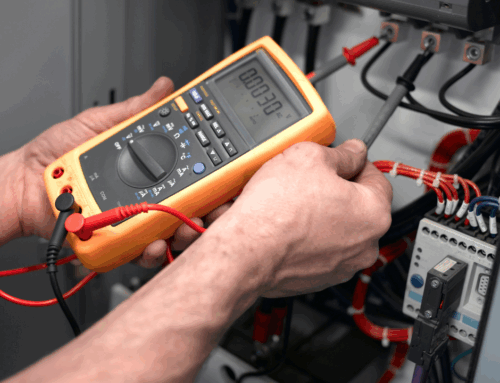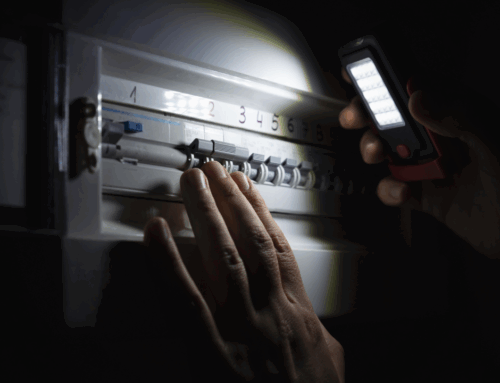As businesses strive for greater energy efficiency, sustainability and improved operational performance, commercial electrical systems are evolving rapidly. The latest trends in commercial electrical systems for 2025 reflect a shift towards smarter, more energy-efficient technologies and solutions that enable businesses to reduce costs, enhance safety and meet sustainability goals. From advancements in renewable energy to the integration of cutting-edge smart technologies, these trends are shaping the future of commercial electrical infrastructure.
1. Energy Efficiency and Advanced Energy Management Systems (EMS)
One of the most significant trends in commercial electrical systems for 2025 is the increased focus on energy efficiency. With rising energy costs and growing environmental concerns, businesses are seeking ways to optimise energy consumption. Advanced Energy Management Systems (EMS) are becoming a vital tool for achieving this goal.
These systems allow businesses to monitor and manage energy usage in real-time. By integrating artificial intelligence (AI) and machine learning, EMS can predict energy demand and adjust settings automatically, ensuring energy is used as efficiently as possible. With real-time data on energy consumption, companies can make informed decisions on how to reduce waste, lower costs and meet sustainability targets. In 2025, this trend is expected to become even more widespread, helping businesses maintain competitive advantages by lowering their energy bills while supporting environmental initiatives.
2. Increased Integration of Renewable Energy Sources
In line with sustainability goals, businesses in 2025 will continue to invest in renewable energy sources like solar, wind and geothermal power. The latest trends in commercial electrical systems for 2025 show a significant rise in the installation of solar panels, particularly on rooftops, parking structures and other commercial spaces. Solar energy systems are becoming more cost-effective and efficient, offering businesses a way to reduce their dependence on the grid, lower energy costs and boost their green credentials.
Alongside solar power, businesses are increasingly integrating energy storage systems (ESS) such as advanced batteries that store excess energy produced during peak sunlight hours. These systems provide an added layer of reliability by ensuring a steady power supply during periods of high demand or when renewable sources are not producing enough energy.
3. The Rise of Smart Building Technologies
Smart building technologies are transforming commercial electrical systems, and this trend will only accelerate in 2025. Businesses are adopting IoT (Internet of Things) devices to automate and control various building functions, from lighting and HVAC systems to security and fire safety systems. These devices communicate with centralised building management systems (BMS), allowing businesses to manage and optimise energy usage remotely.
Smart thermostats, automated lighting controls and motion sensors are now standard in many commercial buildings. These technologies adjust systems based on real-time data, reducing energy consumption by ensuring that lighting and heating are used only when necessary. In 2025, the adoption of smart building technologies will increase, enabling businesses to achieve greater operational efficiency and reduce overhead costs.
4. Electric Vehicle (EV) Charging Infrastructure
As electric vehicles (EVs) continue to gain popularity, businesses are recognising the need for EV charging infrastructure. The latest trends in commercial electrical systems for 2025 reveal a growing number of businesses installing EV charging stations in parking lots and office buildings to cater to employees, customers, and fleet vehicles.
Commercial electricians are being called upon to design and install EV charging systems that are compatible with high-powered networks. This infrastructure not only supports the growing number of EVs on the road but also aligns with corporate sustainability initiatives. With more governments implementing EV-friendly policies and incentives, the demand for commercial EV charging stations will continue to grow in 2025, making it an essential part of commercial electrical planning.
5. Energy Resilience through Microgrids
Microgrids are gaining traction as businesses seek ways to ensure a continuous power supply during power outages or other disruptions. A microgrid is a small-scale, localised electrical network that can operate independently or in conjunction with the main power grid. In 2025, businesses will increasingly rely on microgrids to provide energy resilience and minimise the impact of power interruptions.
Microgrids are particularly beneficial for businesses located in areas prone to extreme weather or grid instability. By incorporating renewable energy sources such as solar and wind, along with energy storage, microgrids offer a self-sufficient power solution. Commercial electricians are essential in designing and installing microgrids, ensuring that businesses are equipped with a backup energy source to maintain operations during emergencies.
6. Smarter Circuit Protection and Safety
As commercial electrical systems become more complex, safety continues to be a top priority. The latest trends in commercial electrical systems for 2025 include advanced circuit protection technologies that enhance the safety and reliability of electrical infrastructure. Innovations like arc fault detection, ground fault protection, and advanced circuit breakers are becoming standard features in commercial buildings.
Smart circuit breakers, for example, allow building managers to remotely monitor and control circuits, ensuring that potential issues are detected early and addressed before they escalate into significant problems. These safety measures not only protect equipment from damage but also help prevent electrical fires and enhance overall building safety. As electrical systems become more intricate, the need for robust safety mechanisms will only increase in 2025.
7. Sustainability and Green Certifications
In 2025, sustainability will be at the forefront of many businesses’ goals, with an increasing number seeking green building certifications such as LEED (Leadership in Energy and Environmental Design). The latest trends in commercial electrical systems for 2025 demonstrate that businesses are investing in energy-efficient electrical systems that help them meet the stringent requirements of these certifications.
Green building practices involve using energy-efficient lighting, integrating renewable energy sources, and adopting smart technologies that reduce a building’s environmental impact. By achieving green certifications, businesses not only enhance their environmental footprint but also attract eco-conscious customers, improve brand reputation, and lower operating costs.
Conclusion
The latest trends in commercial electrical systems for 2025 are largely focused on energy efficiency, smart technologies and sustainability. From advanced energy management systems to the integration of renewable energy sources and electric vehicle charging infrastructure, businesses are embracing innovations that improve both their bottom line and their environmental impact. As these trends continue to develop, businesses will need to stay ahead of the curve by investing in modern, reliable electrical solutions. Working with experienced commercial electricians is essential to ensure that electrical systems are up-to-date, efficient and compliant with the latest standards, ensuring the long-term success of the business.







Leave A Comment